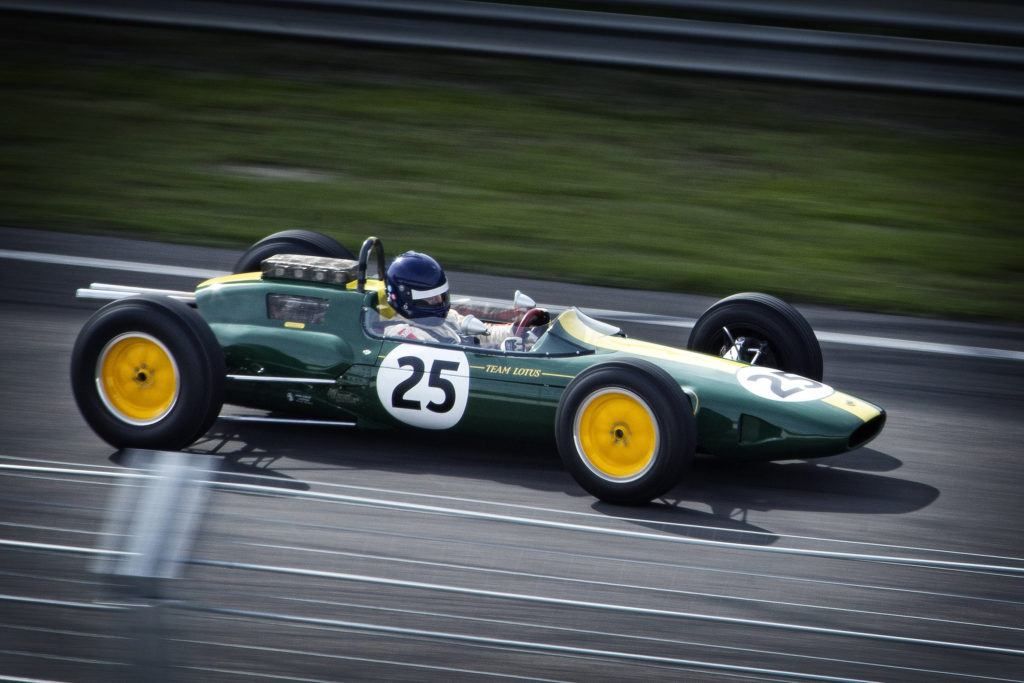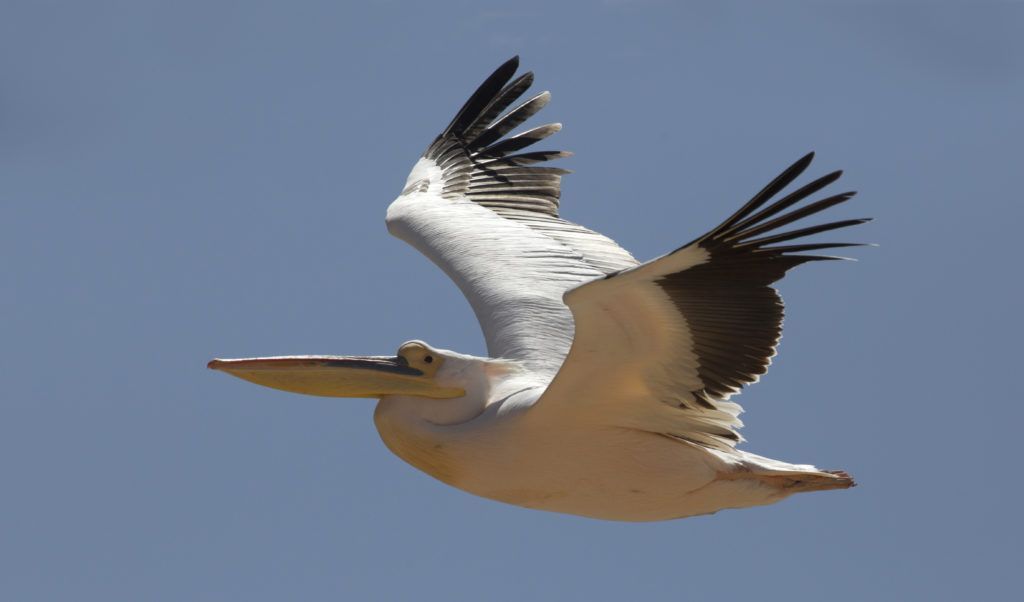Although large and extremely heavy, sumo wrestlers can move like lightning when the right moment comes. Capturing ‘that moment’ requires either lightning reflexes, or you can just set the camera to shoot in ‘continuous high’ drive mode and keep going. If I had not had my finger pressed on the shutter button continuously shooting, I doubt I’d have got this action shot when the loser hit the clay. Photograph by Robin Nichols
I was excited to get into writing this guide because, I thought at the time, surely everyone loves the idea of shooting fast-paced, impossibly exacting action scenes, right?
While I suspect that’s correct, researching this topic made me realize that it’s not all about shooting images at 1/8000s, or banging off frames at supersonic drive mode speeds. If it was, I’d have to go buy a new camera – mine only does five frames per second.
So, action photography is not about having a camera with the fastest features on the planet; although, this can always help in a few instances. It’s more about capturing action in all its forms using any number of shooting techniques, some of which include slow shutter speeds and a single shot. To me, action photography is more about the emotion of the occasion than just using the latest camera features. In reality, it’s anything but an elitist genre.
So, let’s all get our cameras out and see how to capture action!

Some action shots just need to be captured with a high-speed shutter. In this case, it’s 1/8000s @ f5.6, ISO1600. Photograph by Robin Nichols
Go Slow, Drag That Shutter
On first thought, we might assume action photography is all about freezing fast-paced motion, be it runners, racehorses or racing cars, but be assured that some of the best images I have seen from these genres have been shot using relatively slow shutter speeds. Surely this produces a blurry image. Yes, it sure does. And that’s the point.
If I were to stand at the edge of a race track and shoot a Formula 1 car streaking past at 280kph at 1/8000s (even if I could first get it squarely in the frame), I’d probably get a pin sharp ‘frozen’ image of a state-of-the-art vehicle that, to most, looks like it’s parked at the side of the track.
Action photography is more about the emotion of the occasion than just using the latest camera features.
But if I choose a slower shutter speed (called dragging the shutter) – one that’s insufficient to freeze the vehicle’s motion (for example, 1/500s) – I’d potentially get a more evocative image of a Formula machine traveling so fast that it literally blurs across the frame. So, dragging the shutter can certainly produce a result that’s more expressive than simply using the fastest shutter speed on offer.
Key Lesson: Dragging the shutter means to slow the shutter speed down to a setting that will likely result in some blurring of a moving subject.

Panning the Shot
Extending the concept of dragging the shutter is a technique I love to use called panning, whereby you follow the subject and shoot rapidly as it passes by. If you simply stand still and use a slow shutter speed to capture an action shot, the result might be nothing but a shaky, blurry mess. Nice one perhaps for the abstract gallery, but not good for action aficionados.
If you follow the subject at the same speed, you stand to get a clearer subject and a notably blurrier background, thus the two elements in the composition (subject and background) are clearly separated. This is one of the most powerful camera techniques.
But note, by its very nature, this can be a very hit-and-miss technique because it’s tricky to assess the speed of the subject, and therefore to pick your best shutter speed. But when this works, it produces an exceptional result (see the Exposure Tips below for details).
Key Lesson: Panning is when the photographer and camera are still and the camera is moved in the direction of motion as the subject passes by. Mobile panning is when the photographer and camera are moving at the same rate of speed as the subject, while still employing a slow shutter speed.

Here’s a great example of a panned action shot. The photographer has shifted the camera to follow the left to right movement at approximately the same speed as the car producing this dynamic action shot. Photograph by Pexels
Exposure Tips
- The world’s fastest mechanical shutter speed is 1/8000s; although, digital shutter speeds go far higher than that (i.e. 1/32,000s).
- Be aware that extreme shutter speeds require extreme light.
- Panning speeds are from 1/15s to 1/60s. But for fast-moving subjects, use 1/250s to 1/500s.
- Use the Sunny 16 Rule to judge conditions.
Use ISO to Compensate for Lack of Light
When using a telephoto lens, set your shutter speed to the same number as the focal length, or higher, to ensure a shake-free result (i.e. a 300mm lens needs a shutter speed of 1/300s or higher). This is known as the ‘Reciprocal Rule.’
A fast memory card is needed for quick drive modes.
Key Lesson: The Sunny 16 Rule is a way to meter for correct exposure during daylight without using the camera’s meter. For example, if your ISO is set at 200 and your aperture is set to f/16, then your shutter speed will be 1/200 seconds. If your ISO is set to 100, and the aperture is f/16, then your shutter speed will be 1/100 seconds, etc.
Recommended Reading: Want a step-bystep guide on photography skills with your DSLR? Grab a copy of our best-selling guide: the DSLR Crash Course.
Framing the Beast
I teach students this panning technique but make it very clear that at least until they have the technique mastered, it’s going to be a frustrating hit-and-miss process, where perhaps only one in ten or twenty images is going to capture the action meaningfully.
But with digital, we have the ultimate luxury of not paying for film and processing, plus we can delete everything that we don’t want.
One of the biggest issues we all have when it comes to creating memorable action shots is very basic: correctly framing the subject.
Fast-paced action photography tends to involve speedy movement, and actually getting the subject in the frame can be a challenge.
Try photographing a bird in flight. To achieve best results with birds, you generally need a telephoto lens, and because that has a narrow angle of view, actually getting the bird into the frame is tricky.

Here’s a great example of how to get it wrong. I’m framing this wonderful giant heron with my 300mm lens, and it gets spooked and takes off. I continue shooting in the hope of pulling off a compositional miracle, but of course, I’m far too close and miss the shot. The trick is to pull back a bit; maybe to a 150mm or 200mm setting so that the wider field of view can accommodate your subject’s movement. You can always crop later. Photograph by Robin Nichols
The more powerful the telephoto lens, the trickier this can be. Then you have to contend with the focus, backlighting (flying birds are usually shot against a bright sky), and of course, the subject motion.
I always admire any great bird-in-flight shot, simply because I know how hard it is to get it right. I should know; I’ve been trying it for years.
I can offer two tips for capturing this kind of elusive action subject: Shoot wider than you might otherwise shoot, and select the fastest drive setting possible.
The more powerful the telephoto lens, the trickier this can be.
Shooting wider (by zooming out a little) means that your subject will appear smaller in the frame, but it does make framing a little easier, plus you can always crop it later to perfect the composition.
All cameras have a variable drive mode. Most have single shot and continuous, but increasingly we are seeing cameras with a single shot, low speed, plus a high-speed continuous option.
When the motion is extreme, go for the fastest drive mode available. That way, you’ll possibly get the shot that a single press of the shutter inevitably misses.

Another example of an action shot. This time it’s a large African Great White pelican in flight – a relatively easy shot, I guess, because it’s such a large bird. That said, I still zoomed back a little so as to make framing in flight a little easier, cropping the resulting RAW file more than 50% to produce this close-up image. Photograph by Robin Nichols
Is Your Memory up to Speed?
On that topic, it also pays to check if your memory card read/write speed can accommodate the speed of your frame rate.
For example, if you use an Olympus OMD EM1 MKIII, which has a top 15 frames per second rate, but you only have an SD card rated at 60Mbs, then the camera will not be able to clear the buffer of its 20Mb+ files efficiently.
It will stop shooting well before a couple of seconds worth of RAW frames have been shot.
Inevitably, that’s when something really interesting happens with the subject!
Check the frame rate of your camera and buy a memory card to match or exceed the camera’s capture capability. That way you are less likely to miss a shot because the card cannot keep up with the camera.

If you want to speed up your shot rate, one trick is to set the camera to record JPEGs only because they record faster than a RAW file. Set the camera’s drive mode to continuous high and keep shooting. Provided the scene lighting is not contrasty, as you see in this sumo match in Hakata, Japan, you’ll get pretty even exposure results. Photograph by Robin Nichols
Capturing Extremely Fast Subjects
Although I began writing this guide saying that fast shutter speeds are not the only way to capture action, they can help. But this comes with a warning.
Think on this: if you understand the Sunny 16 Rule, which states that on a cloudless sunny day a perfect exposure will be 1/125th at f/16 with ISO 100, you might appreciate that choosing one of the top shutter speeds now available in some cameras (1/8000s to 1/12,000s) can lead to serious exposure limitations.
Key Lesson: Choosing a very fast shutter speed means that you are limited to shooting in only very bright lighting conditions, or increasing your ISO setting, or opening up your lens aperture.
Recommended Reading: Want a step-by step guide on photography skills with your DSLR? Grab a copy of our best-selling guide: the DSLR Crash Course.
1/8000th is six exposure steps ‘faster’ than 1/125th.
If 1/125th provided the correct exposure at f/16 with ISO 100, then to get a perfect exposure at 1/8000th would require you to shoot at an ISO setting of 6400 and open up the aperture to f/1.4.
If the ambient light is darker than full sunshine (which inevitably it is), then the ISO setting has to go higher still, or you are forced to shoot at wider apertures – something that many telephoto lenses might not accommodate.
Either scenario presents problems where the ISO is too high, or the aperture is not ideal for the subject matter.
To maintain the best image quality, you might then need to consider a full-frame camera, which can handle high ISO shooting with better quality, and a faster maximum aperture lens, both of which are going to be heavier and more expensive than regular consumer camera gear.

Bright sunshine helped me record this image of a dolphin playing in the wake of our boat. My exposure was 1/800s at f/6.3 using ISO 400. Shooting a fast-moving subject like this is tricky because you never know exactly where the dolphins will surface. To get this image I shot at a wider angle than normal and then cropped more than 50% off the file to frame the subject closer. Photograph by Robin Nichols
Wildlife action shots are probably my favorite genre. The best times to find these subjects are at dawn, late afternoon, or early evening, when there’s not a lot of light available.
When this is the case, I either shoot wide open (i.e. f/2.8 where possible), boost the ISO as far as I dare (10,000 ISO is about the limit for my Canon EOS 5D MkIII), or I try adding motion into the image by panning. Ironically, my panning shots usually work out the best.

I have been lucky to visit several African game parks and love snapping the wildlife. Unfortunately, the light, scenery, or time of day is not always ideal for best results. One way of changing the game is to shoot with a slower-than-recommended shutter speed while panning the lens, in order to give a sense of that animal’s movement, energy, and purpose. These images were shot at 1/15s to emphasize motion. Photograph by Robin Nichols
- True or False: You have to have a newer camera to capture exciting action photography.
- What is ‘dragging’ the shutter?
- What is mobile panning?
- What is the world’s fastest mechanical shutter speed?
- If the shutter speed is fast, does that require more or less light intensity?
- What is the Reciprocal Rule?
- What are the three difficulties to photographing birds in flight?
- What two choices can you make to improve your photography of birds in flight?
- Why is memory card speed important?
- If you want to increase your frame rate, should you use the camera RAW format or .jpeg format?














